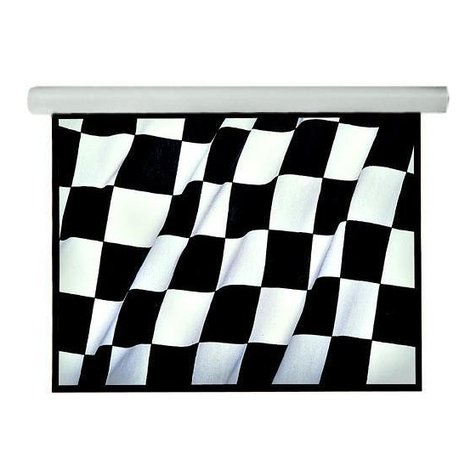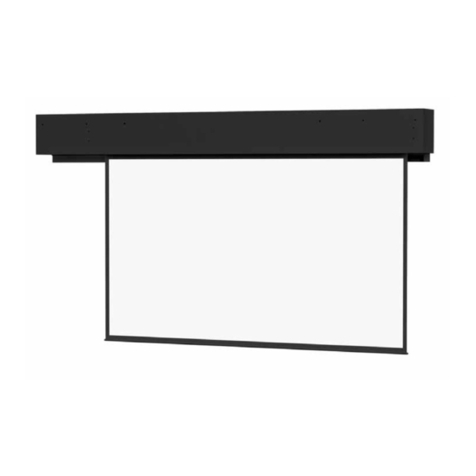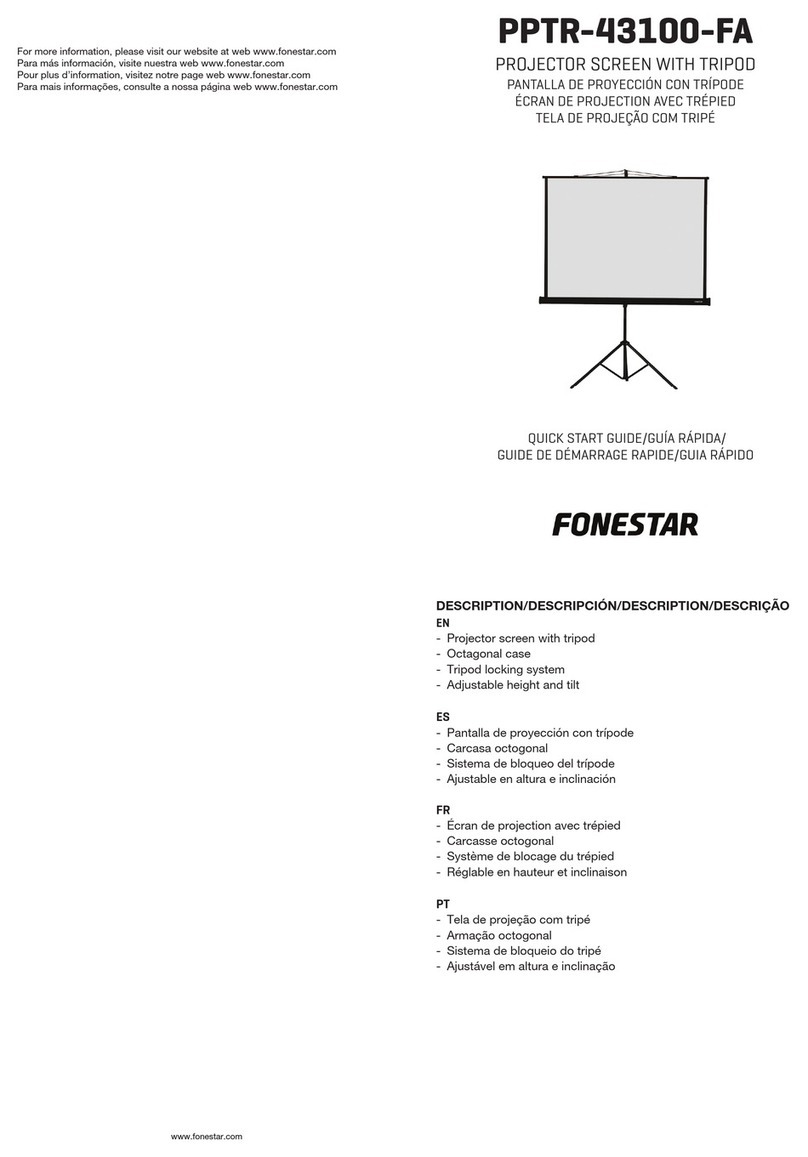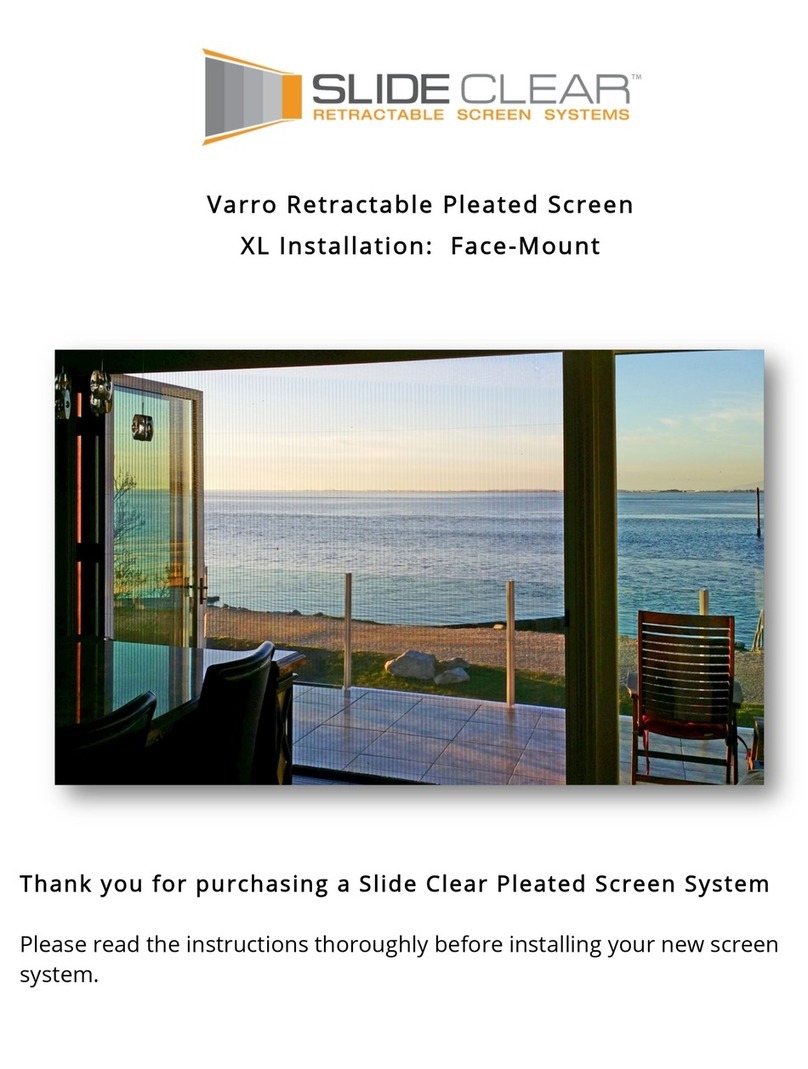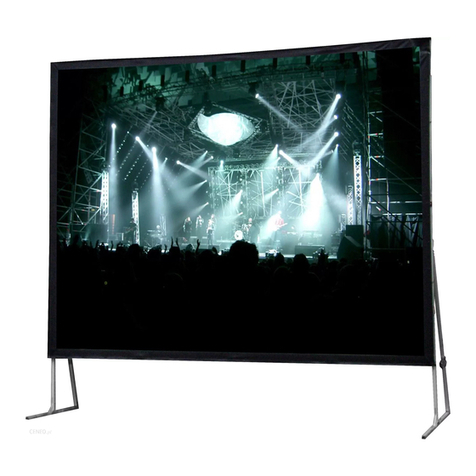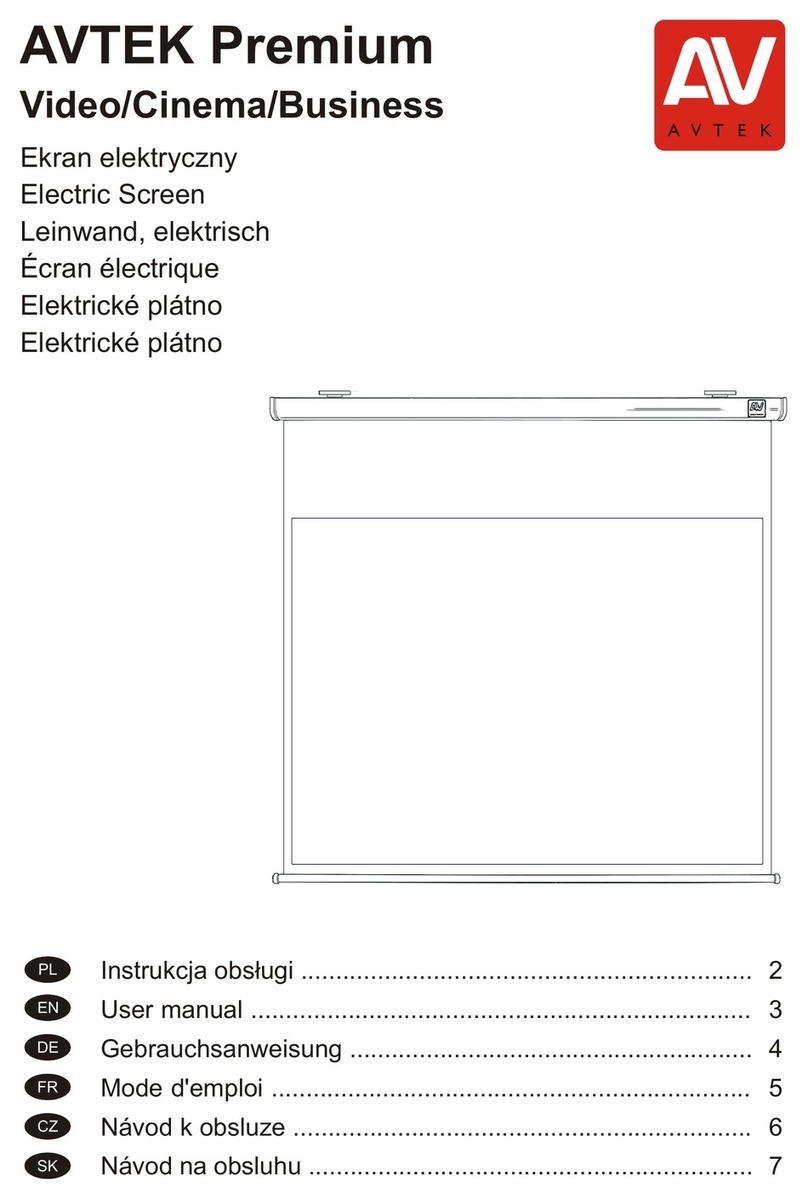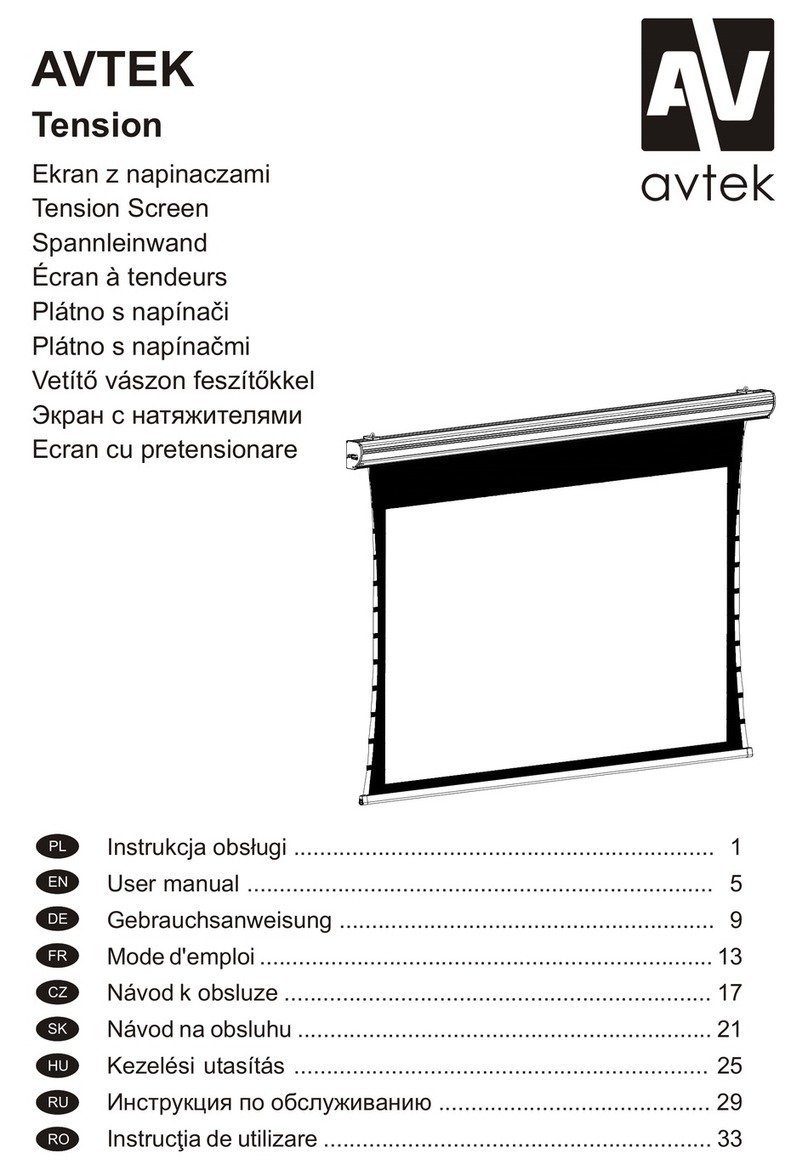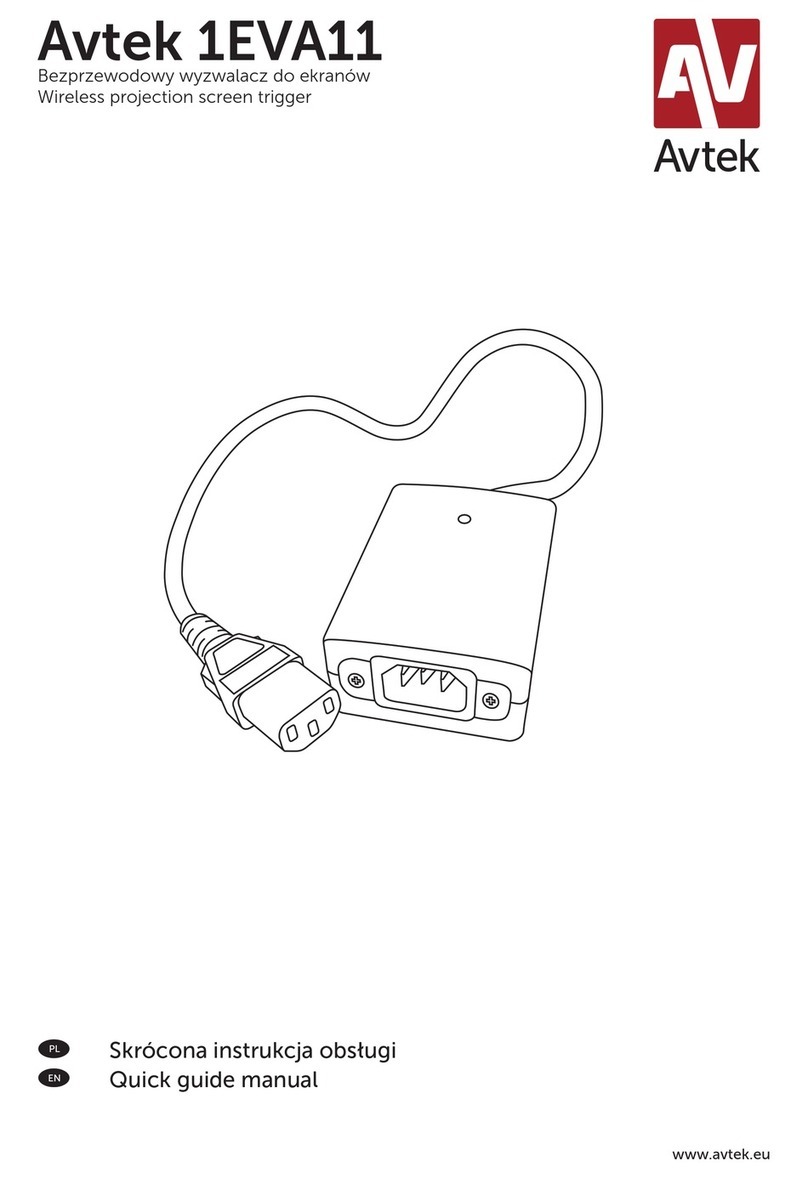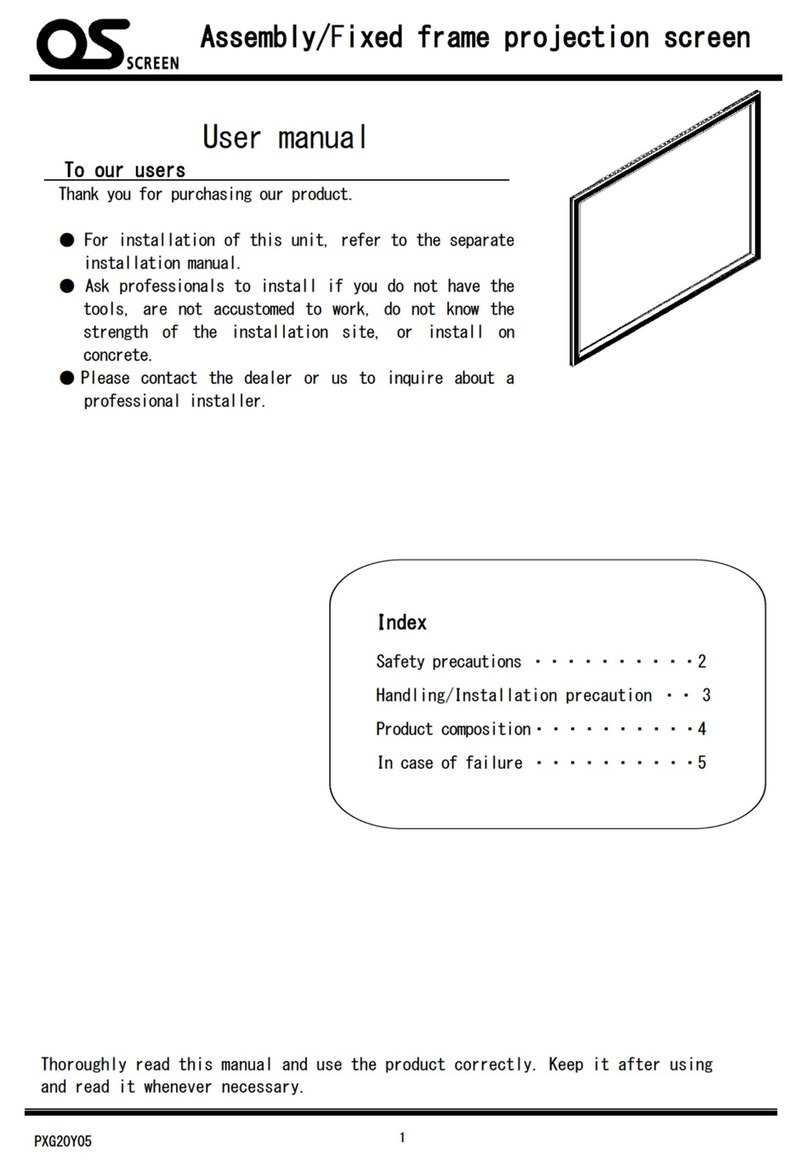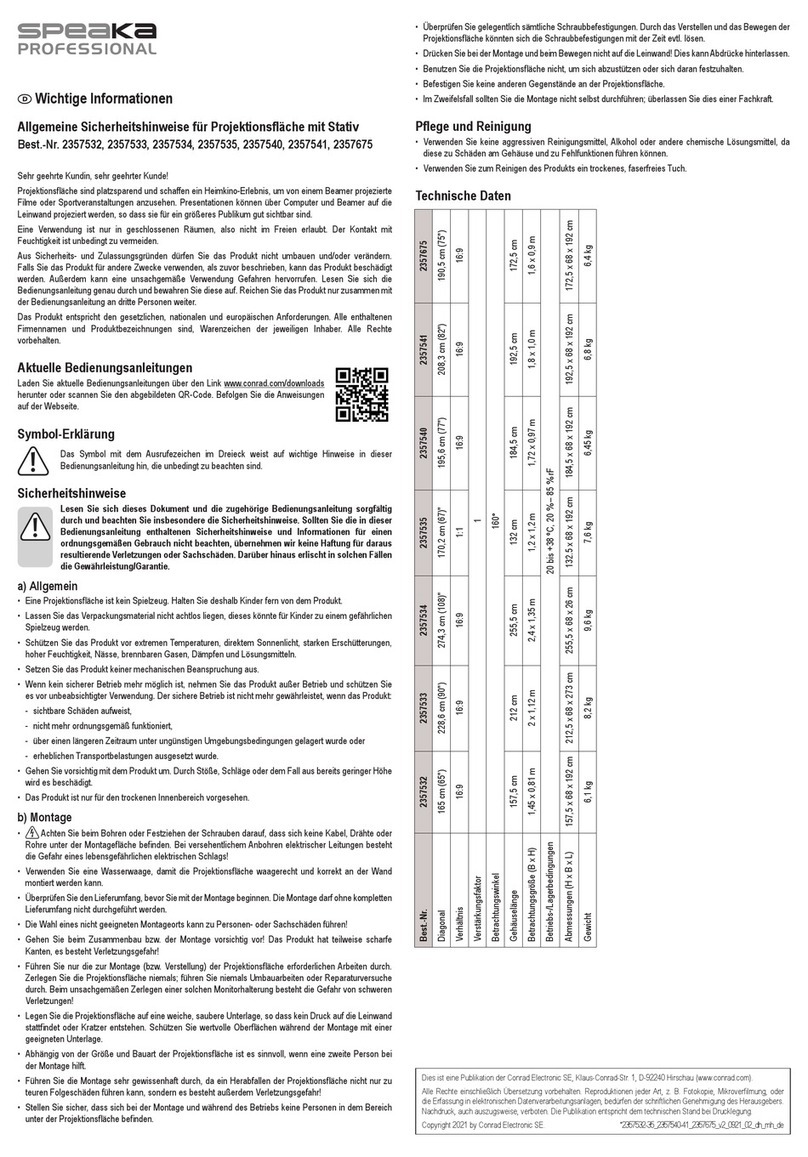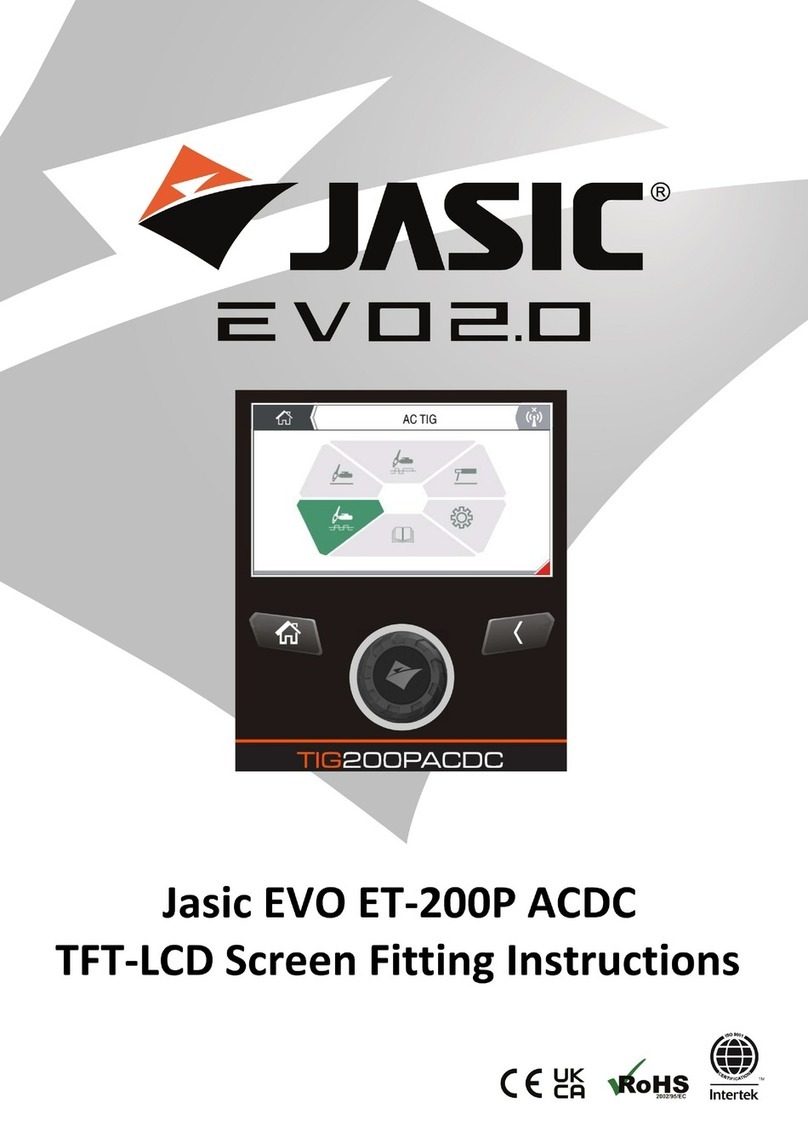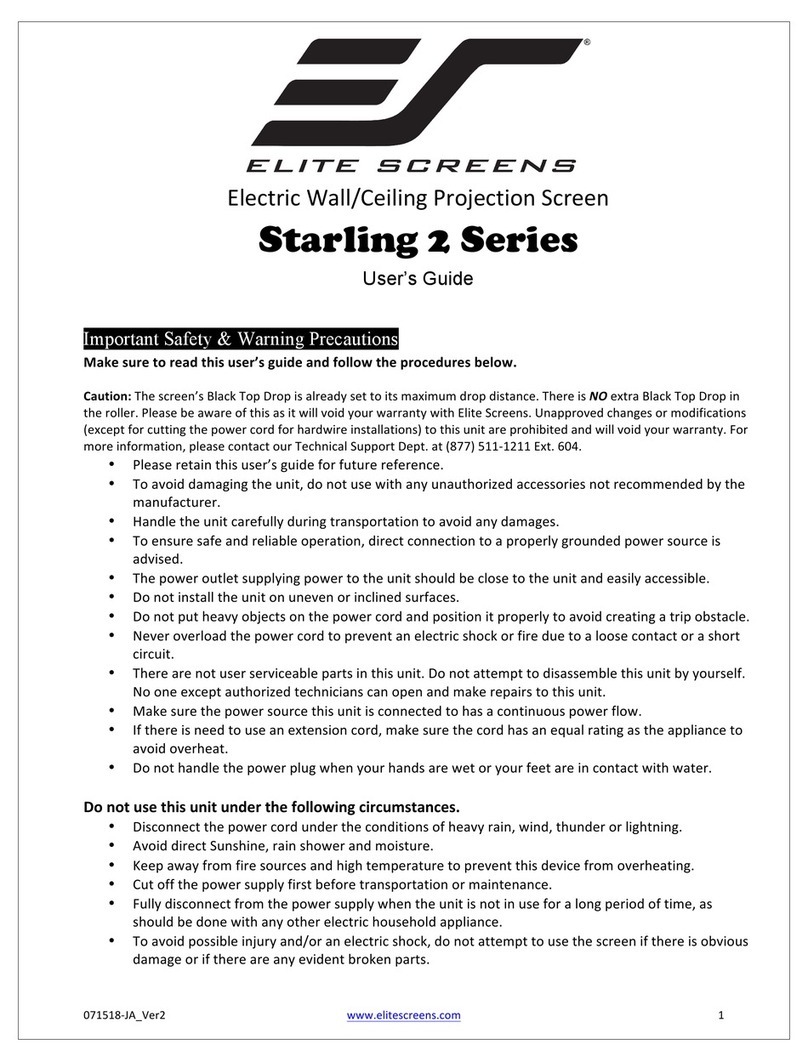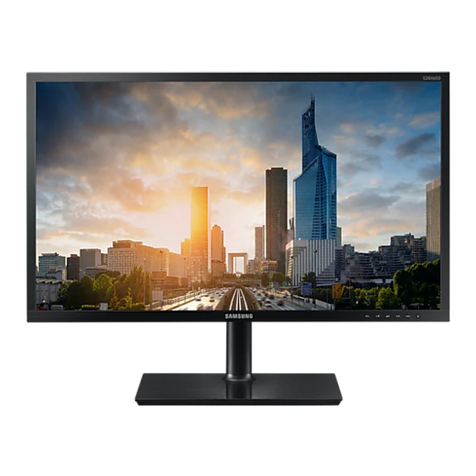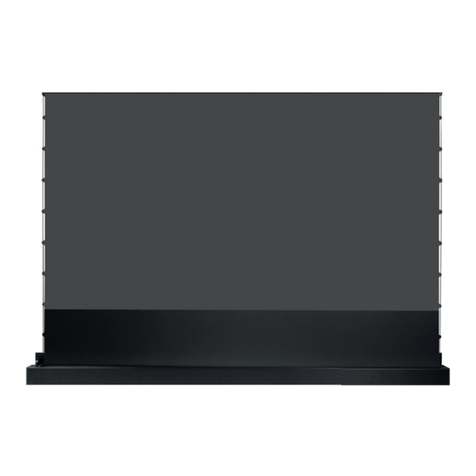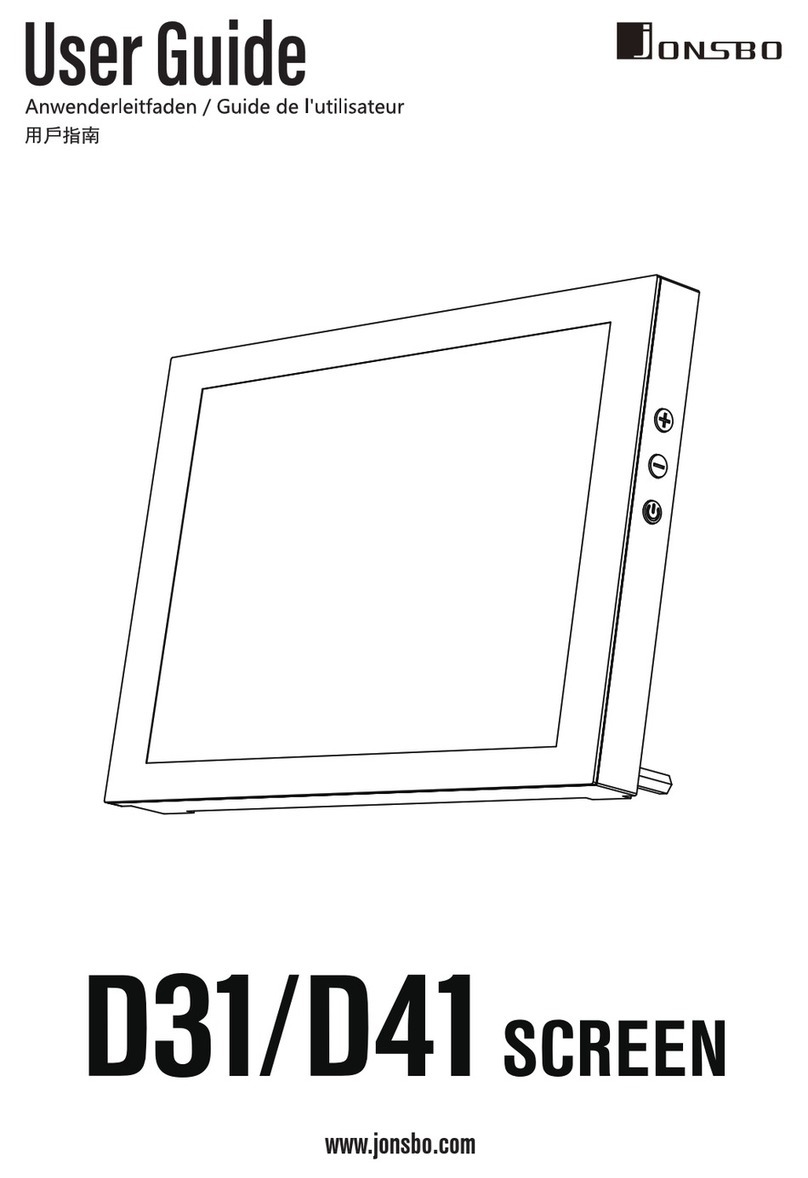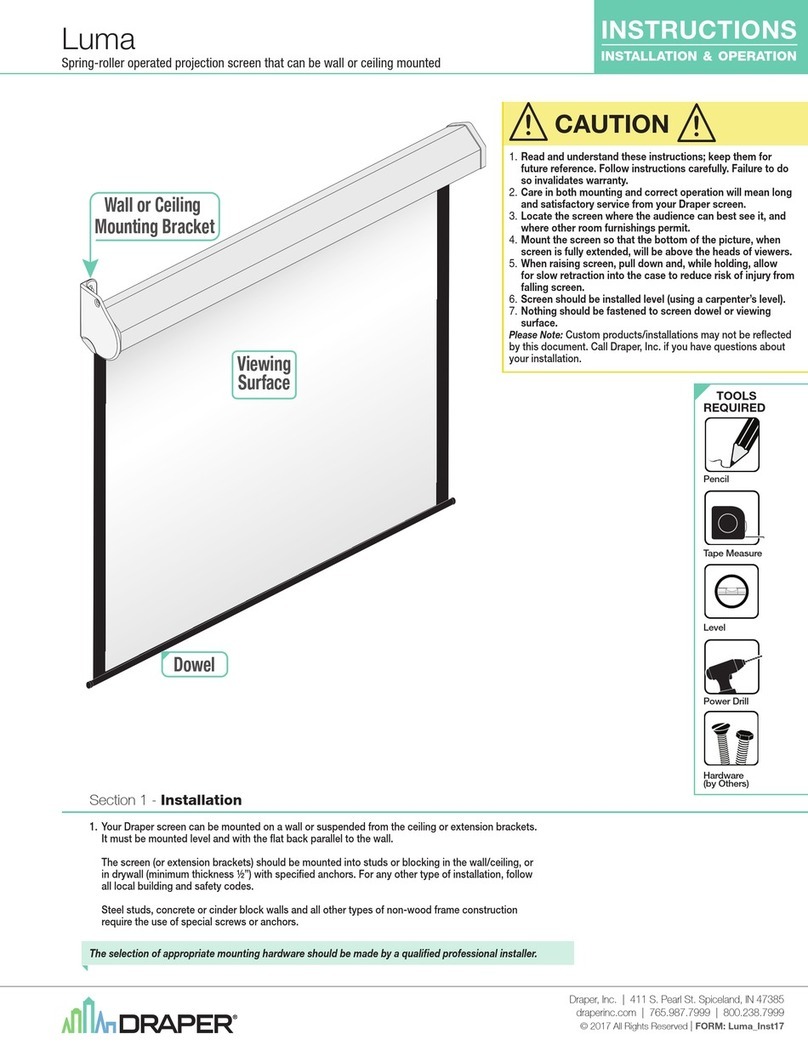
Écran électrique
Mode d'emploi
Il est nécessaire de prendre connaissance des informations
sur l'emballage et le boîtier de l'écran.
Tension :100 V ~ 120 V, 60 Hz
ou 220 V ~ 240 V, 50 Hz
Consommation : 210 W (maximum)
Dessin des câbles, partant du haut :
Brun : sous tension (enroulement)
Noir : sous tension (déroulement)
Bleu : neutre
Jaune-vert : mise à la terre
L'écran peut être suspendu au mur ou au plafond. Le type d'installation
dépend des besoins personnels de l'utilisateur. Dans tous les cas il faut
s'assurer que les accessoires utilisés sont appropriés.
Pour le montage mural ou au plafond sur une surface en bois, utiliser des
vis ø5 x 60 mm.
Afin d'installer l'écran sur un mur en brique, en béton ou en plâtre, utiliser
des vis ø6 x 60 mm et des ancres ou des chevilles en plastique
appropriés au type de mur.
Montage au plafond :
(En cas de nécessité, installer d'abord les anneaux d'attache de chaque
côté du boîtier)
Mesurer la distance entre les attaches aux extrémités du boîtier de l'écran.
Percer dans le plafond des ouvertures pour les crochets à la même distance en
s'assurant d'abord que la ligne qui les relie est parallèle au mur.
Visser des crochets de taille appropriée dans chaque ouverture percée et y
suspendre l'écran par les attaches se trouvant à ses extrémités.
Mode de montage au plafond
L'écran doit être installé de manière qu'après son déroulement complet
chaque spectateur puisse le voir en entier.
Montage mural :
Mesurer la distance entre les ouvertures des ferrements pour le montage
mural, ensuite marquer sur le mur des points éloignés de cette distance. Y
percer les trous pour les vis en s'assurant que la ligne qui les relie est bien
horizontale. Visser une vis appropriée dans chaque trou et suspendre
l'écran à l'aide des ouvertures qui se trouvent dans les ferrements aux
extrémités de son boîtier. Vérifier à l'aide d'une règle si l'écran est
uniformément éloigné du mur.
Mode du montage mural
Brancher le câble d'alimentation à une prise (s'assurer d'abord si la tension
dans la prise est appropriée). Placer le câble d'alimentation de manière que
personne ne puisse trébucher ou le tirer, loin des objets et des surfaces
chauds. S'il est nécessaire d'utiliser une rallonge, elle doit avoir les mêmes
paramètres concernant l'intensité de courant admise.
Déroulement de l'écran (Dessin 2)
Mettre l'interrupteur sur la position < =>. La feuille de projection va se
dérouler et lorsqu'elle est complètement sortie du boîtier, le moteur de l'écran
s'arrête automatiquement.
Enroulement de l'écran (Dessin 3)
Mettre l'interrupteur sur la position <->. La feuille de projection va
s'enrouler et lorsqu'elle disparait complètement dans le boîtier, le moteur de
l'écran s'arrête automatiquement.
Pour arrêter manuellement l'enroulement/déroulement
de la feuille de l'écran, mettre l'interrupteur sur la position < O >.
7
Déroulement de l'écran
Appuyer sur le bouton inférieur de la télécommande. La feuille de l'écran se
déroule et lorsqu'elle est complètement sortie du boitier, le moteur s'arrête
automatiquement.
Enroulement de l'écran
Appuyer sur le bouton supérieur de la télécommande. La feuille de l'écran s'enroule
et lorsqu'elle disparait complètement dans le boîtier,
le moteur s'arrête automatiquement.
Pour arrêter manuellement le
déroulement de l'écran en position
partiellement déroulée, appuyer sur le bouton
du milieu de télécommande.
Limiteur supérieur — Il permet de régler le point d'arrêt de
la latte inférieure de l'écran lors de son enroulement total. Si
lors de l'enroulement de l'écran, sa latte inférieure doit
s'arrêter plus près du boîtier, tourner la manette „Upper Limit”
en sens inverse horaire.
Limiteur inférieur— Il permet de régler le point d'arrêt de la
latte inférieure de l'écran lors de son déroulement total. Si
lors du déroulement de l'écran sa latte inférieure doit s'arrêter
plus bas, tourner la manette „Lower Limit” en sens inverse
horaire.
Données techni
ues du s
stème électri
ue
Installation
Utilisation de l'écran
Utilisation à l'aide d'une télécommande sans fil
(Dessin 4)
Utilisation à l'aide d'une télécommande (Dessin 1)
Ré
la
e
Des. 1 Des. 2 Des. 3
Des. 4
